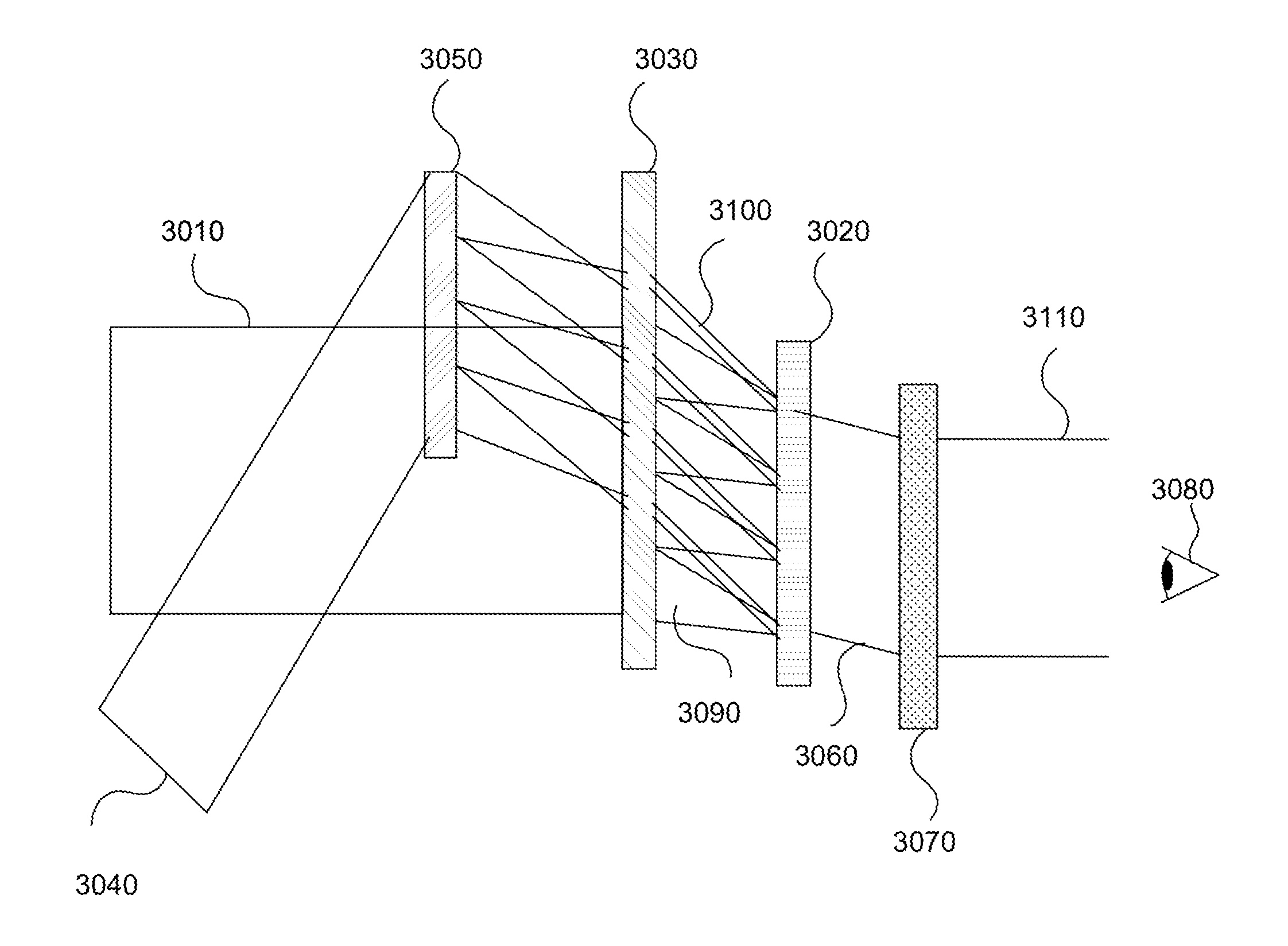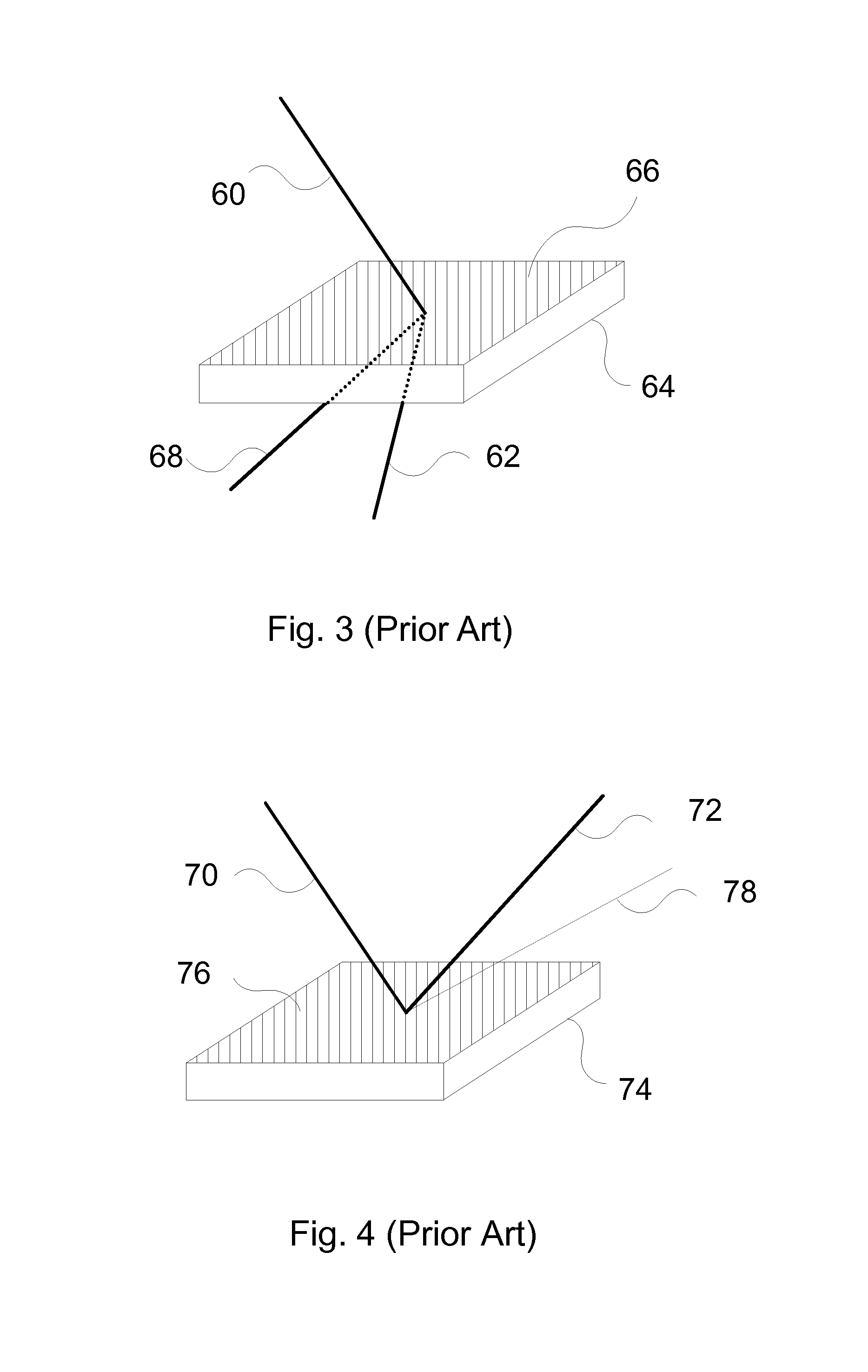System for holography
a holographic display and system technology, applied in the field of recording holograms, can solve the problems of limited use and high cost, devices without memory, and inability to generate arbitrary scenes by holographic displays, so as to reduce the angle, and increase the diffraction efficiency of pr polymer.
- Summary
- Abstract
- Description
- Claims
- Application Information
AI Technical Summary
Benefits of technology
Problems solved by technology
Method used
Image
Examples
Embodiment Construction
[0056]The present invention provides methods of recording holograms that reduce the writing time, improve the resolution, increase the efficiency, or restitute color. These techniques are well suited for use with an updateable 3D holographic display using integral holography. These techniques may be used individually or in combination.
[0057]In photorefractive polymer materials the diffraction efficiency strongly depends on the angle between the grating vector and the external applied field direction. The grating vector is perpendicular to the bisector of the object and reference beams inside the recording material. The diffraction is minimum when this angle is 90° and maximum when this angle is 0°. This is due to the charge transport mechanism that is governed by drift. When using a PR polymer it is important to minimize this angle to optimize the diffraction efficiency. For transmission gratings, this is achieved by using a non-symmetrical geometry where the sample is tilted accord...
PUM
| Property | Measurement | Unit |
|---|---|---|
| external electric field | aaaaa | aaaaa |
| electric field | aaaaa | aaaaa |
| angle | aaaaa | aaaaa |
Abstract
Description
Claims
Application Information
 Login to View More
Login to View More - R&D
- Intellectual Property
- Life Sciences
- Materials
- Tech Scout
- Unparalleled Data Quality
- Higher Quality Content
- 60% Fewer Hallucinations
Browse by: Latest US Patents, China's latest patents, Technical Efficacy Thesaurus, Application Domain, Technology Topic, Popular Technical Reports.
© 2025 PatSnap. All rights reserved.Legal|Privacy policy|Modern Slavery Act Transparency Statement|Sitemap|About US| Contact US: help@patsnap.com



